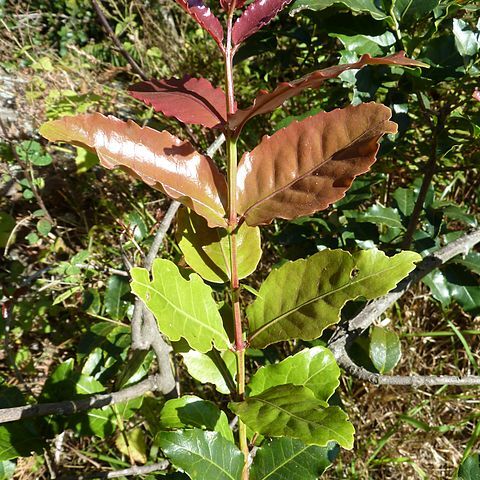A climber or scrambling shrub. It can be 0.6-2.5 m high. The branches are grey and flexible. The twigs are usually 4 angled. The flower shoots tend to grow backwards. The leaves are simple and opposite. They are leathery and 1.3-8 cm long by 0.6-5 cm wide. The edges of the leaves are often wavy and rolled inward. They often have spiny teeth. The flowers are small and white. They occur in clusters. The fruit are green but turn red or black when ripe. They have a stone inside. The fruit are edible.
Scrambling or climbing shrub, up to 4 m high. Branches 4-lined. Leaves opposite, oblong, 20-80 x 1-50 mm, glossy green, margin toothed. Inflorescence small. Fruit a berry, red to purple. Flowers cream.
Scrambling shrub or liana with branchlets often bent back, conspicuously 4-lined. Leaves opposite, subsessile, elliptic-ovate, toothed. Flowers in axillary cymes, cream-coloured. Berries red to purple.

